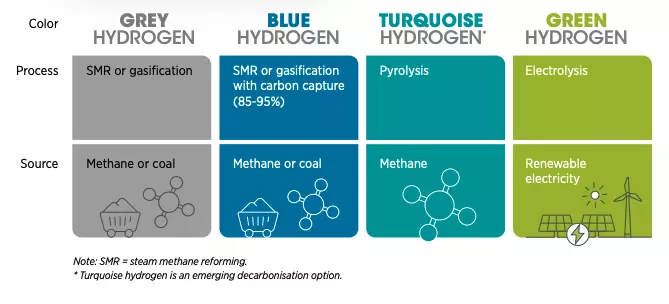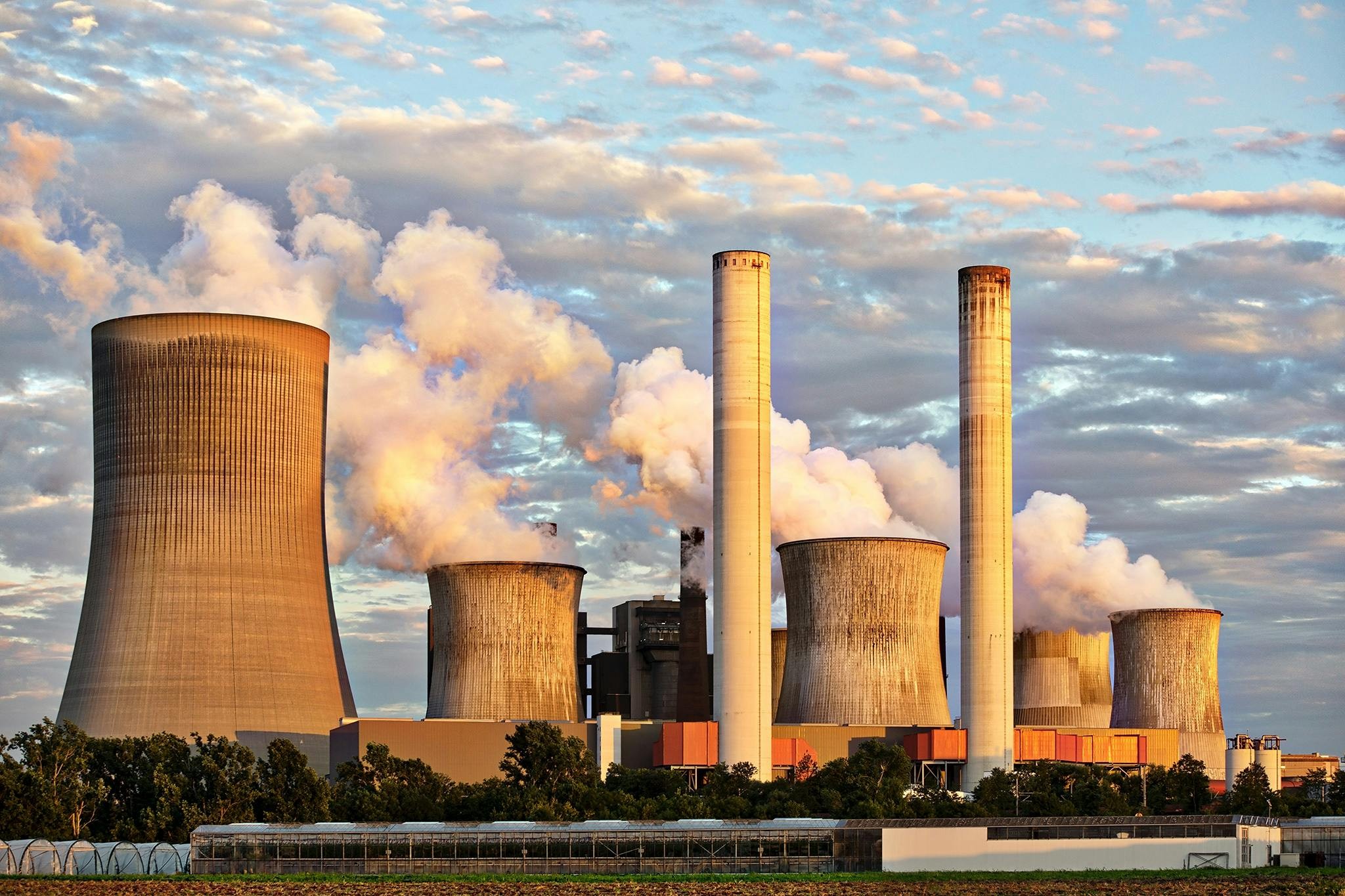Description
Copyright infringement not intended
Picture Courtesy: Pexels
Context
Hydrogen fuel, if harnessed properly, could power homes, balance electricity grids, and store renewable energy from solar and wind farms for months.
Hydrogen Fuel
Hydrogen fuel is an energy carrier that can be used to power vehicles, generate electricity, and store energy. It produces energy through combustion or electrochemical reaction in fuel cells, emitting only water vapor as a byproduct when used.
Types of Hydrogen fuel
- Brown Hydrogen: Most of the gas that is already widely used as an industrial chemical is either brown, if it's made through the gasification of coal or lignite.
- Grey Hydrogen: If it is made through steam methane reformation, which typically uses natural gas as the feedstock. Neither of these processes is exactly carbon-friendly.
- Blue Hydrogen: Where the gas is produced by steam methane reformation but the emissions are curtailed using carbon capture and storage.
- Green Hydrogen: Green hydrogen, in contrast, could almost eliminate emissions by using renewable energy — increasingly abundant and often generated at less-than-ideal times — to power the electrolysis of water.

Importance of Hydrogen Fuel
- Source of Clean and Green Energy
- Hydrogen fuel, especially green hydrogen, emits zero greenhouse gases at the point of use.
- Only water vapor is released during combustion or in fuel cells, making it a clean alternative to fossil fuels.
- Strategic for India’s Energy Security
- India imports over 85% of its oil needs—hydrogen can reduce reliance on fossil fuel imports.
- High Energy Density and Versatility
- Hydrogen has a high energy-to-weight ratio, making it ideal for heavy-duty vehicles and long-distance transport.
- Economic Opportunity
- The global hydrogen market is projected to reach hundreds of billions of dollars.
Other uses of Hydrogen Fuel
- Heating and cooking:Hydrogen can be blended into natural gas pipelines or used directly in boilers and stoves designed for it.
- Backup and off-grid power: Fuel cells can deliver reliable electricity to hospitals, data centers, remote communities.
- Seasonal energy storage:Hydrogen produced from surplus solar or wind energy in summer can be stored and used in winter.
- Industrial processes:Steel production, cement, ammonia/fertilizer synthesis — all heavy-carbon industries that currently burn coal/natural gas — can be decarbonised by switching to hydrogen.
Uses of hydrogen by major developed and developing countries
- Japan has made hydrogen a national priority. It runs hydrogen buses and is pushing hydrogen supply chains and “hydrogen towns.”
- Europe is rolling out hydrogen strategies across countries like Germany, France, and the Netherlands. The European Union has declared hydrogen central to decarbonization.
- China is investing heavily in hydrogen production, fuel-cell vehicles, and pilot projects to integrate hydrogen with its renewables.
- United Statesis boosting funding for hydrogen hubs, green hydrogen research, and deploying hydrogen infrastructure in California, Texas, and other energy states.
- Indiahas launched the National Green Hydrogen Mission, aiming to scale up hydrogen production, create demand, and build storage/fueling systems.
Hydrogen vs. Petrol
- Hydrogen (especially green) is clean — emits only water whereas Petrol combustion contributes to air pollution and climate change.
- Hydrogen can be made renewably Petrol is finite and contributes to and environmental risks.
- Hydrogen fuel cells are more efficient than petrol engines.
- Petrol is convenient due to global infrastructure whereas Hydrogen needs new infrastructure: production, storage, transport, refuelling.
- Objectives: Boost production, develop infrastructure, and create export markets.
- Budget of ₹19,744 crore, targets reducing green hydrogen costs to $1/kg by 2030 to compete globally.
- Key Programs:
- SIGHT Program: Allocates incentives for green hydrogen production (862,000 tonnes/year to 18 companies) and electrolyzer manufacturing (3,000 MW/year to 15 companies) as of August 2025.
- Green Hydrogen Hubs: Targets 100,000 tonnes/year per hub near ports or industrial clusters.
- Green Hydrogen Policy (2022): Waives interstate transmission charges for projects until 2030 and allows 30-day renewable energy banking.
- Economic Impact: Expected to create 6 lakh jobs and save ₹1 lakh crore in fossil fuel imports by 2030.
Challenges
High Costs
- Green hydrogen costs $3.5–5/kg, compared to grey hydrogen at $2/kg.
- Electrical systems account for 30–50% of capital costs, and electrolyzers degrade faster with intermittent renewables.
Infrastructure Gaps
- Limited pipelines, storage systems, and refueling stations hinder scalability.
- Scaling up electrolyzer manufacturing remains a bottleneck.
Resource Constraints
- Producing 5 MMT requires 50 billion litres of demineralized water, challenging in water-scarce regions.
- Land acquisition for renewable projects faces environmental and social risks.
Financing Hurdles
- High capital costs deter private investment.
- Technology risks in electrolysers and storage add uncertainty.
Environmental Concerns
- Life-cycle emissions from renewable component manufacturing and hydrogen leakage are often overlooked.
- Sustainable biomass sourcing is critical to avoid deforestation.
Way Forward
Cost Reduction
- Waive GST on electrolysers and renewable components to cut costs.
- Offer low-cost green debt to reduce financing costs.
Infrastructure Development
- Build dedicated hydrogen pipelines and retrofit natural gas networks for blending.
- Develop Green Hydrogen Hubs near ports using PM Gati Shakti mapping.
Demand Creation
- Mandate Green Hydrogen Purchase Obligations (HPO) for industries like fertilizers.
- Use the Carbon Credit Trading Scheme to incentivize adoption.
Research and Innovation
- Increase R&D funding beyond the NGHM’s funds to develop efficient electrolysers, by providing incentives to the private sector.
- Leverage the Anusandhan National Research Foundation for innovation.
International Collaboration
- Strengthen ties with Saudi Arabia and Japan for R&D and trade.
- Align with International Maritime Organization's (IMO) Net Zero Framework to boost green ammonia exports.
Conclusion
Hydrogen is a clean, high-potential fuel for the future, especially in a world moving toward decarbonization and sustainability. It holds immense strategic, economic, and environmental importance. It is not just an alternative fuel, but a transformational energy carrier that can help nations like India transition to a cleaner, more resilient, and self-reliant energy future.
Source: Indian Express and IAS GYAN
|
PRACTICE QUESTION
Q. Which of the following is a key advantage of hydrogen fuel over petrol?
a. Higher carbon content per unit
b. Emits only water vapor when used in fuel cells
c. Easier to transport and store than petrol
d. Derived from crude oil
Answer: B
Q. Discuss the role of hydrogen as an alternative to petrol in India’s energy transition. Examine its advantages and the challenges involved in its large-scale adoption. (250 Words)
|
Frequently Asked Questions (FAQs)
Hydrogen fuel is an energy carrier that can be used to power vehicles, generate electricity, and store energy.
Grey Hydrogen, Blue Hydrogen, Green Hydrogen, Black Hydrogen
Transport, Industrial Processes, Power Generation, Household etc.












